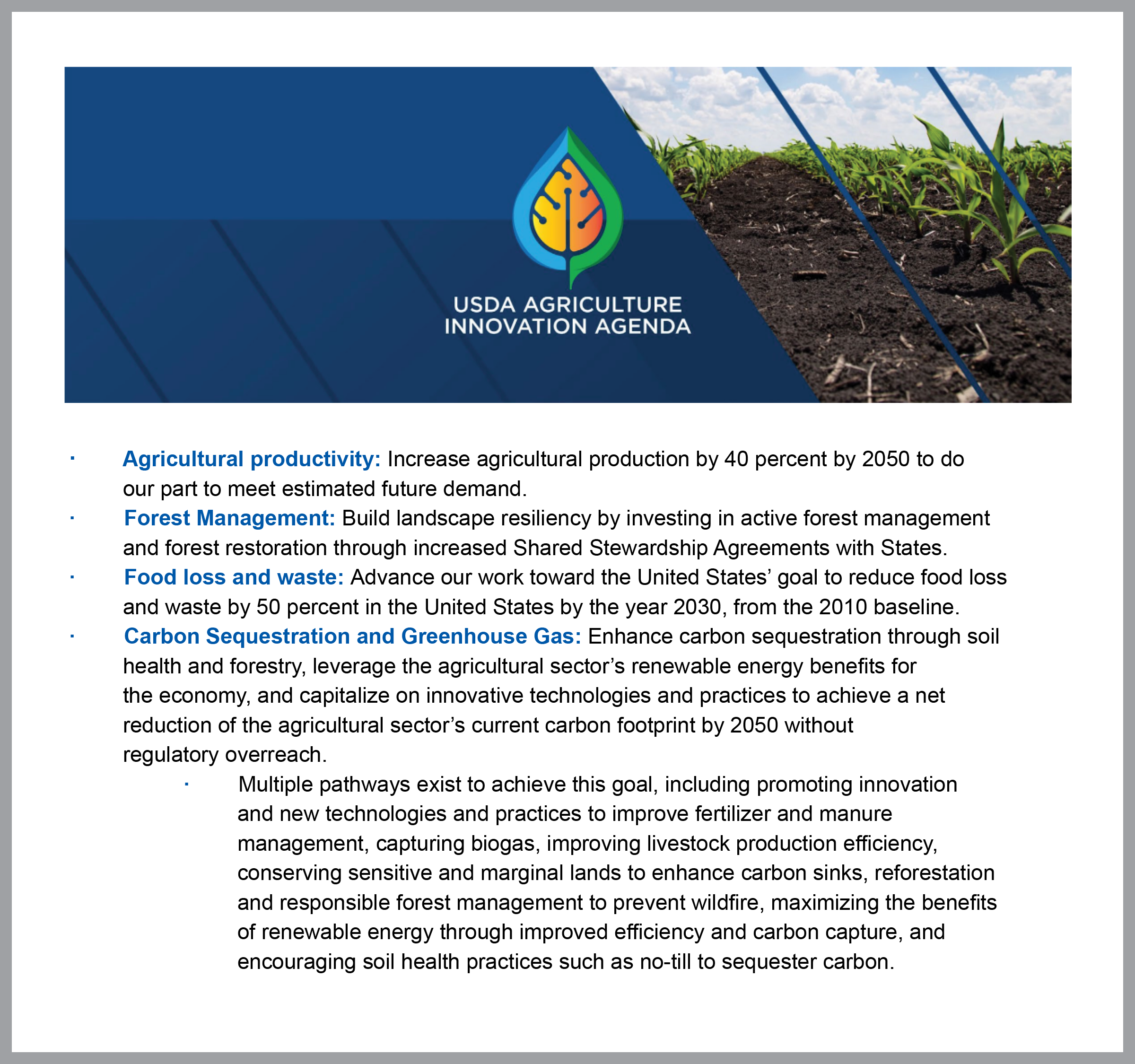Secretary Purdue announced the USDA Agriculture Innovation Agenda on February 20, 2020. The agenda provides a roadmap for “increasing U.S. agricultural production by 40 percent while cutting the environmental footprint of U.S. agriculture in half,” by 2050. The new agenda includes calls for carbon sequestration and practices to reduce greenhouse gases.
The Covid-19 pandemic has pushed many other concerns into the background.
This includes an important policy update from the Department of Agriculture, the “USDA Agriculture Innovation Agenda". Secretary Purdue announced the agenda in late February. It calls for “increasing U.S. agricultural production by 40 percent while cutting the environmental footprint of U.S. agriculture in half,” all by 2050. Of note, part of the new agenda (reprinted below) focuses on carbon sequestration and practices to reduce greenhouse gases.
Carbon sequestration is the process of moving carbon dioxide out of the atmosphere into some form of storage. This happens when plants take up carbon dioxide and convert it into leaves, stems, and roots. As plant material decomposes, it adds organic matter to the soil. Carbon taken up by plants can be stored in tree trunks and in the soil for many years. Carbon dioxide is the most important greenhouse gas, so sequestration can reduce climate impacts. Many states are moving in the same direction as the USDA Innovation Agenda.
Increasing soil organic matter is the same as increasing soil carbon, and one of the key goals of soil health. Read more in our May 2020 Quarterly Harvest about new NRCS practices for farmers designed to improve soil health and sequester carbon. Another way for landowners to store more carbon is via agroforestry, also featured in this issue. Whatever is done, it must be cost-effective. Look for more work from the Northeast Climate Hub on the economics of soil health and carbon sequestration.
The USDA is soliciting comments on the Innovation Agenda until August 1st.
We want to hear your ideas! Email us at SM.FS.NEhub@usda.gov or join the conversation @USDAClimateHubs on Twitter.


